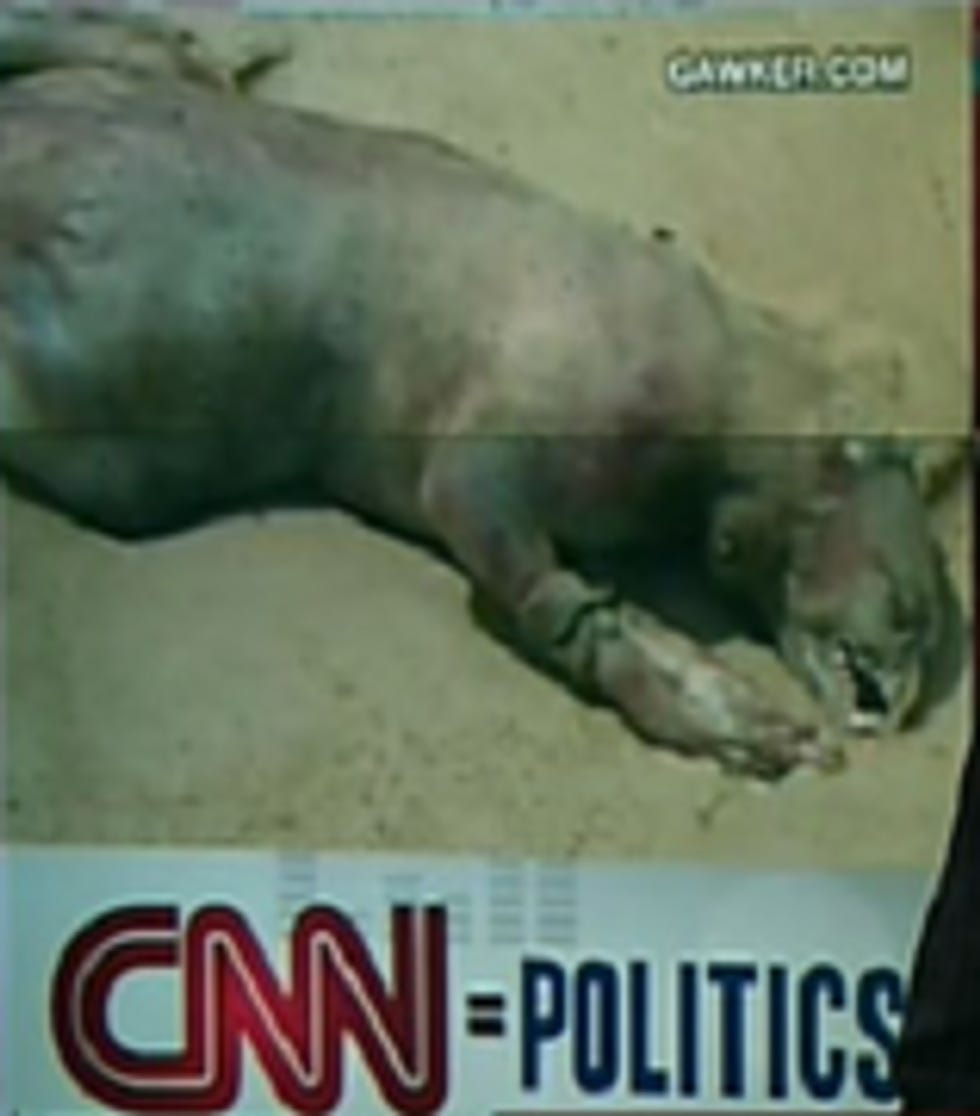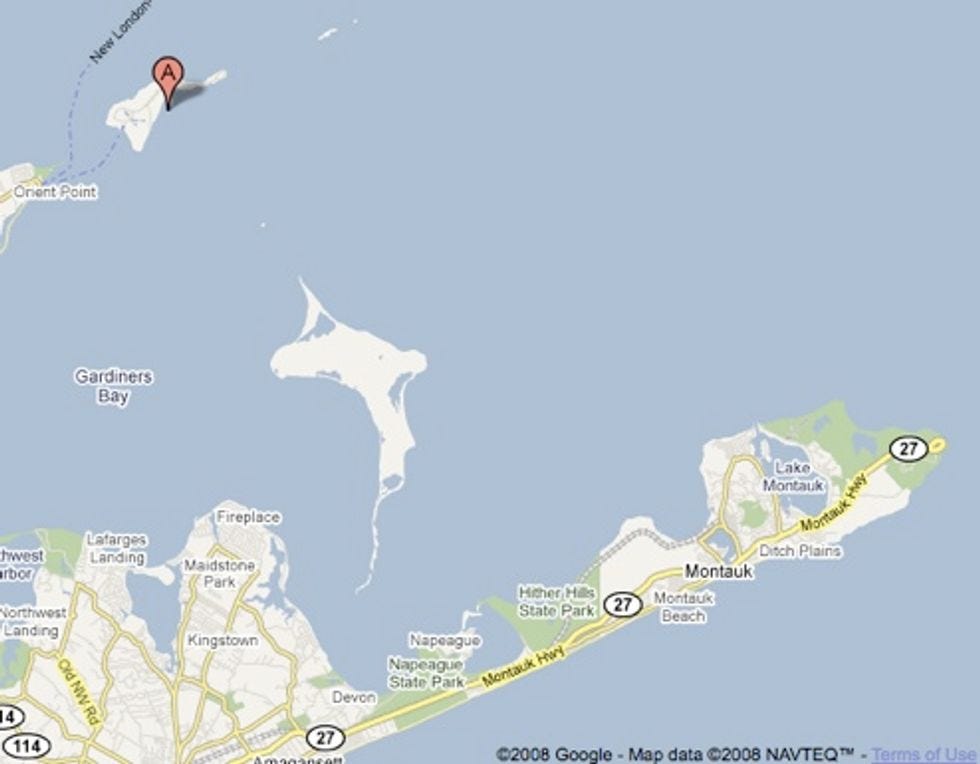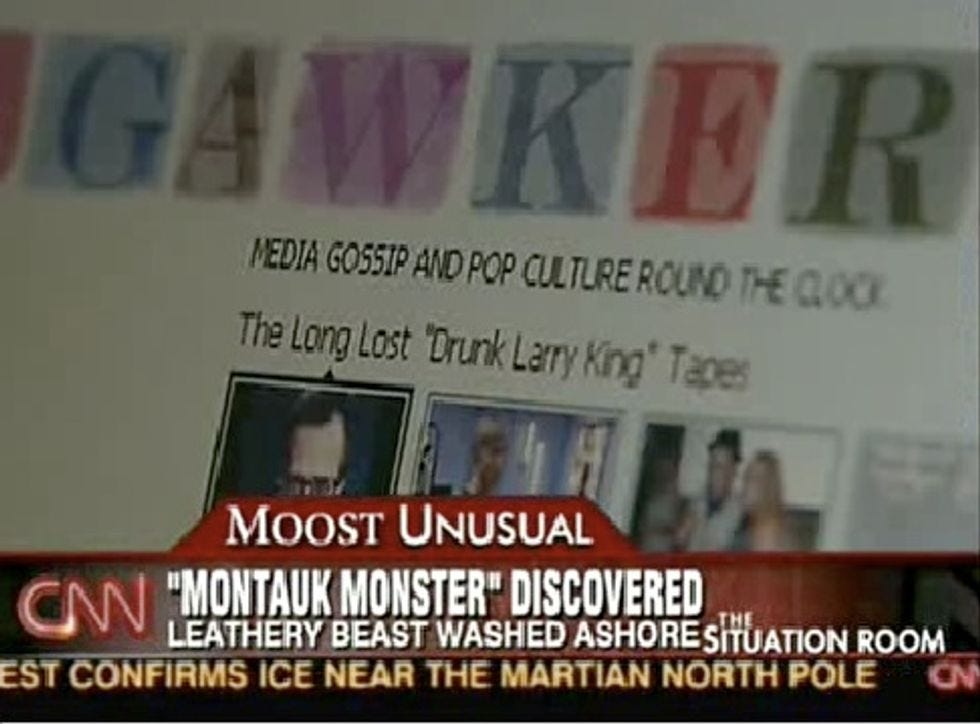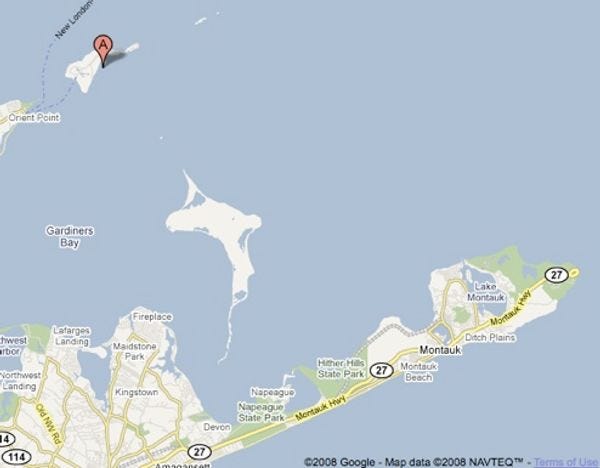Did Bush Administration Loose Montauk Monster Upon America's Beach?

When a terrible monster was found washed up on the beach near Montauk, New York, on July 12, the local newspaper speculated that the mutant beast escaped from Plum IslandAnimal Disease Center, the top secret government lab known as "Monster Island."Wonkette has since learned that the Biosafety Level 3(or Level4) facility was taken over by the Department of Homeland Security in 2003, has had numerous biohazard accidents in recent years, was investigated by the House last year, is no longer patrolled by Federal Protective Services police, and has been the subject of environmental sabotage by government contractors. Worse, the Bush Administration is currently trying to shut down the island laboratory and replace it with a monster lab on the U.S. mainland, where the deadly diseases could easily spread to livestock and people.
The 840-acre island sits a few miles across Gardiners Bay from Montauk, at the tip of Long Island. It was a military base through World War II, after which it was taken over by the Department of Agriculture for the isolated study of livestock viruses such as foot-and-mouth disease and anthrax. But the work at Monster Island turned dark in the early 1950s, as Cold War biologists were told to create horrors to set loose upon Soviet agriculture and even Cuba's tobacco crops.

Mishaps have been recorded since 1954, the Bush Administration acknowledged in April, with the 1978 escape of foot-and-mouth disease from the laboratory to the open-air farm on the island being one of the worst acknowledged accidents.
In a government simulation in 2002 called "Crimson Sky,"foot-and-mouth disease spread from the laboratory to mainland farms. The National Guard shot tens of thousands of infected animals before it literally ran out of bullets, people rioted in cities because of food shortages, a 25-mile-long mass grave had to be dug in Kansas, and the acting president, Senator Pat Roberts, described the government response as"a mess."
People who live around the mysterious facility have long suspected viral releases haven't just happened in federal readiness drills.
In 2004, theNew York Pressnoted the still-unexplained 1975 appearance of the first cluster of patients suffering from a tick-borne disease in the woods of Lyme, Connecticut -- right across Long Island Sound from Plum Island itself.
There are also suspicions about the sudden 1999 encephalitis outbreak in New York and Connecticut caused by an African bird virus never before seen on this continent, with Plum Island sitting in the middle of the outbreak zone.
Even the anthrax mailings of 2001 began in New York and ended with the death of 94-year-old Ottilie Lundgren in Oxford, Connecticut, although the government now claims the rogue biological-weapons scientist behindthatcrime was employed by the federal biological weapon laboratory at Fort Detrick,Maryland. (Osama bin Laden and/or Saddam Hussein did the anthrax mailings, according to George W. Bush and Dick Cheney in late September of 2001, and FBI chief Robert Mueller was "beaten up" for failing to come up with supporting evidence.)

The most horrible stories about Monster Island are, of course, about the supposed monsters being bred on Plum Island. There was the Hybrid Mutant of Maine, the Dover Demon, and that dead deer outside Cheney's house for a week.
As for the mysterious Montauk Monster, Plum Island director Dr. Larry Barrett finally issued an official statement last week:
"It is impossible to accurately identify the species of animal from the photo. There is no scale from which to judge its size. Additionally, when a body has had prolonged exposure to water and predators, it can be altered or appear different from its normal form. If we had the actual body, we could tell you what it is; however, from viewing the lower canine tooth and other physical characteristics evident in the picture, we could guess it may be a dog or raccoon. I can state categorically that it is not associated with the work performed at Plum Island Animal Disease Center (PIADC). PIADC serves as the Nation's first line of defense against foreign animal diseases of livestock by identifying such diseases through diagnostic testing and by developing vaccines to protect livestock from those diseases."


